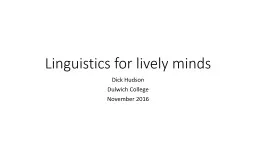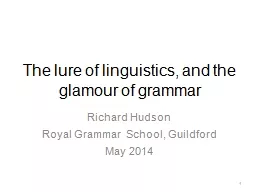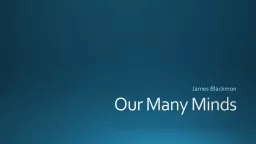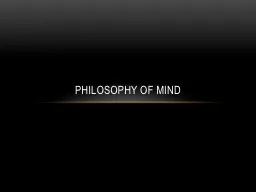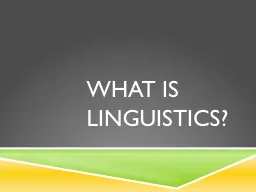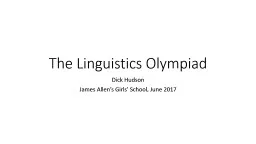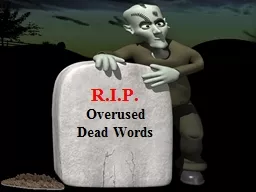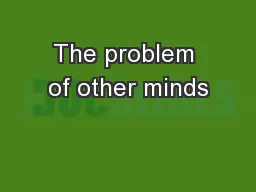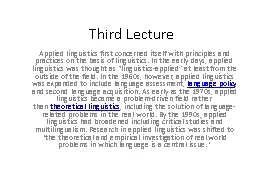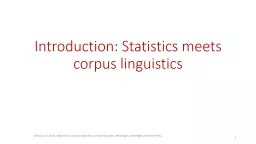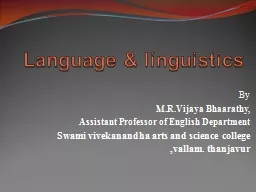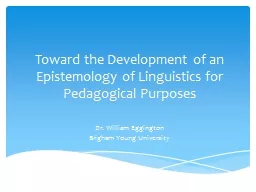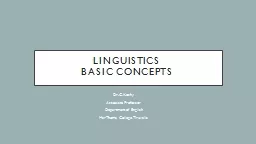PPT-Linguistics for lively minds
Author : phoebe-click | Published Date : 2017-05-14
Dick Hudson Dulwich College November 2016 Q1 Are meanings relevant A puzzle Japanese hiragana phonetic script How does it work Check Wikipedia or work it out Q2
Presentation Embed Code
Download Presentation
Download Presentation The PPT/PDF document "Linguistics for lively minds" is the property of its rightful owner. Permission is granted to download and print the materials on this website for personal, non-commercial use only, and to display it on your personal computer provided you do not modify the materials and that you retain all copyright notices contained in the materials. By downloading content from our website, you accept the terms of this agreement.
Linguistics for lively minds: Transcript
Download Rules Of Document
"Linguistics for lively minds"The content belongs to its owner. You may download and print it for personal use, without modification, and keep all copyright notices. By downloading, you agree to these terms.
Related Documents

